B2B marketing is known for being slow, hard, and—compared to B2C marketing—flat-out boring. When I traded in a career in marketing consumer tech products for one marketing professional services, my peers were sure I’d regret it. Marketing a law firm?
But here I am, having a blast. Because, as it turns out, I’m still a human, marketing to other humans. Here are my tips for humanizing your B2B marketing strategy.
1. Go beyond LinkedIn
It’s easy, as a B2B company, to go straight to LinkedIn when thinking about social media marketing. And, yes, that’s a great start. At Stephenson Law, we use LinkedIn to connect with decision-makers in niche areas of tech who are looking for digestible industry insights.
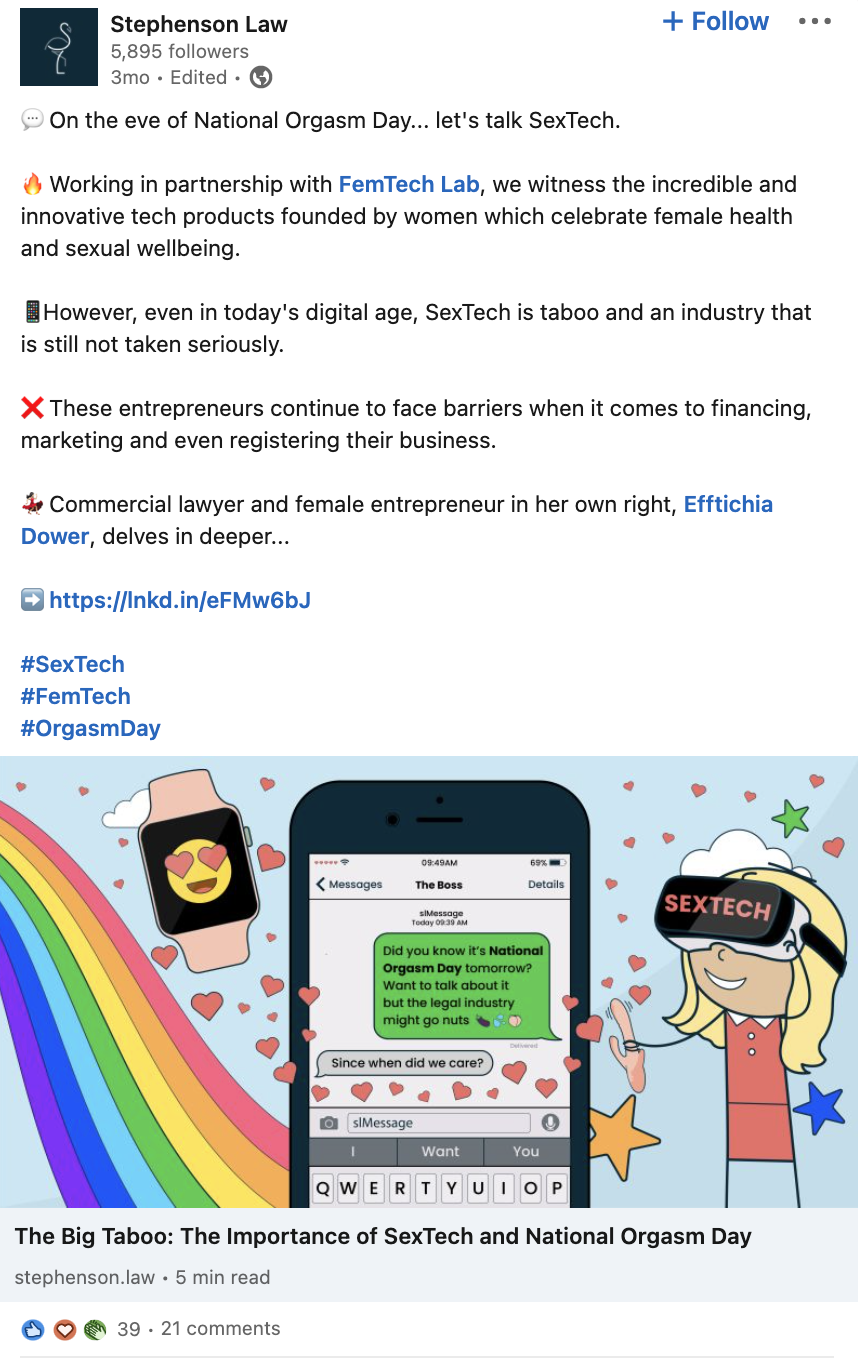
But you need to think about other social channels too—even the ones you might not expect, like TikTok, Clubhouse, and Reddit. As humans, we tend to engage differently on certain channels, and your target market is no different. They might be on LinkedIn to gain business insights to excel in their jobs, but they’ll be on TikTok to unwind and have a laugh. That means you need to cater your content to the channel.
For example, we use Instagram as a platform to showcase our employer branding and attract new talent to our firm. And on Twitter, we highlight our tech specialization to attract clients in that niche.
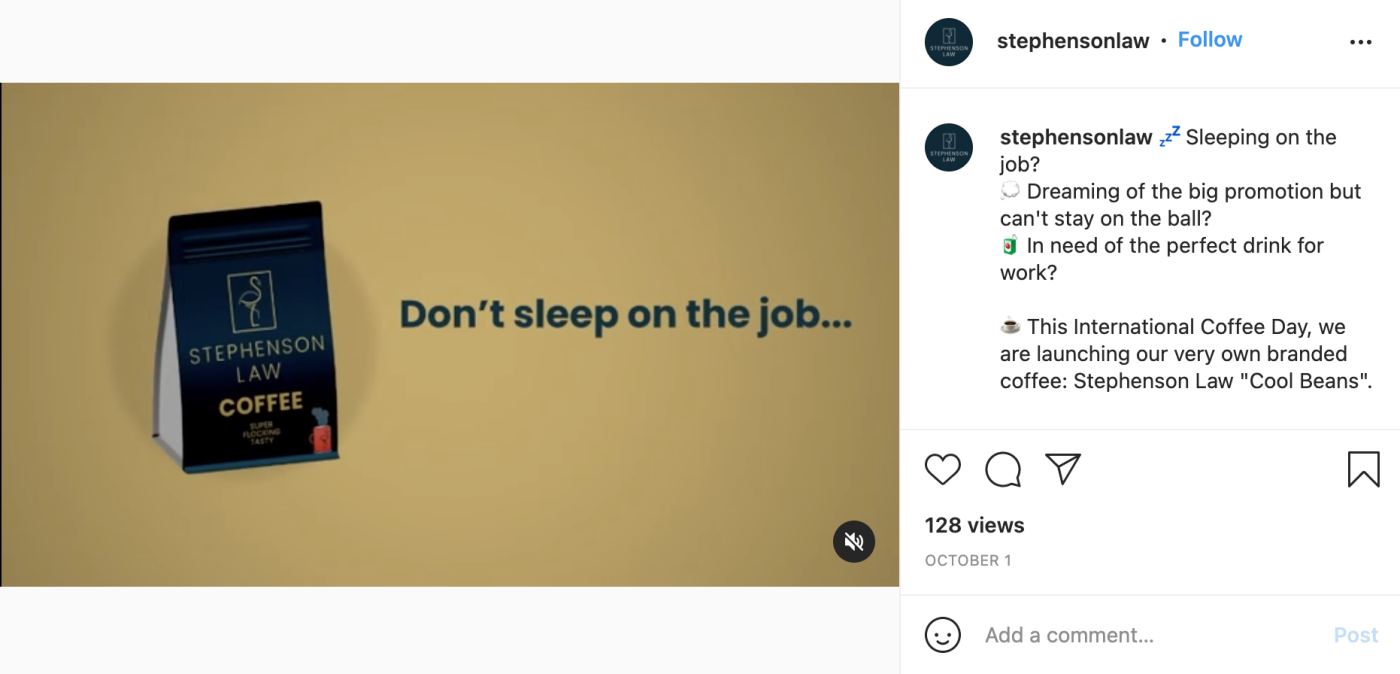
Because we went beyond the standard channels, we’re now competing against some of the largest law firms in terms of online market share, despite being a newcomer in the legal industry.
2. Show some personality
You might have noticed from the examples above that our social posts aren’t always…traditional.
Many B2B marketers forget that they’re ultimately talking to humans who, behind their screens, enjoy engaging with brands online. Take one of your targets on Twitter or Instagram and have a look at some of the brands their employees are following and engaging with. The decision-makers—and any of their team members who have influence over products and services they purchase—follow brands that are personable.
Lawyers are infamous for being complicated, stuffy, and full of jargon. We wanted to bust that myth, so we showcase our legal knowledge while keeping it accessible, and when possible, lighthearted. Dare I say even funny?
There was an IP case in 2021, where Marks & Spencer tried to sue Aldi for copying their caterpillar cake. Our response: have our audience vote on which camp they were supporting, while our IP team offered some unusual commentary.

We also had some fun on TikTok. We wanted to offer behind-the-scenes content that showcased our internal culture for potential employees. We’re an all-remote team with no physical offices, so we took some illustrations and brought them to life doing a dance that was trending on TikTok at the time.
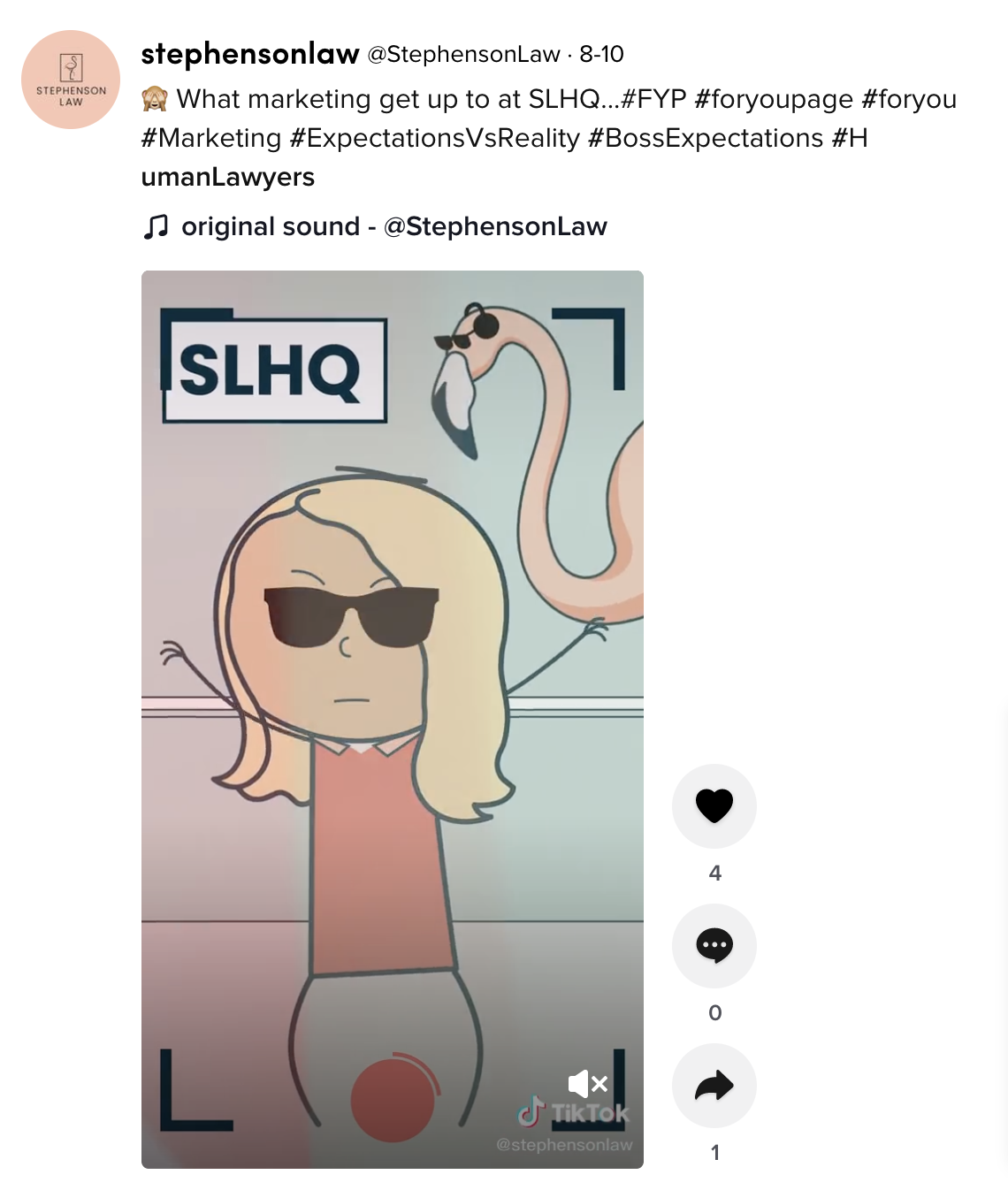
We may not be Addison Rae, but we also don’t have to be boring. Being a little outrageous and memorable can help audiences remember you—and recommend you in the future.
3. Create a personal experience for audiences
No one wants a mass email that doesn’t actually speak to their interests or pain points. (I don’t even know the number of lists I’ve unsubscribed from this year.) So if you’re using email as a medium, you have to personalize it.
When we launched our startup platform, flamenco, which provides entrepreneurs with affordable legal resources to help start and grow their business, we went all-in on personalization. Especially as a content platform, it was really important for us to showcase relevant information to our readers based on what they actually needed. There was no point showing them content about intellectual property if they were just looking to generate employment contracts for their staff.
We use ActiveCampaign, which allows us to segment our audiences by the types of content they consume, how engaged they are with the platform, and other factors like their business size and job position. Based on that information, our users receive personalized content recommendations via email.
You can take personalization offline, too. Every time someone joins our firm, we send them a branded box with a Stephenson Law hoodie to welcome them to our “flock.” We noticed that our team was posting about these hoodies online unprompted, causing “hoodie envy” among their followers. So we ran an experiment and sent some of our merchandise to our key brand advocates and followers. As it turns out, law firms can have brand advocates who have never worked with them.
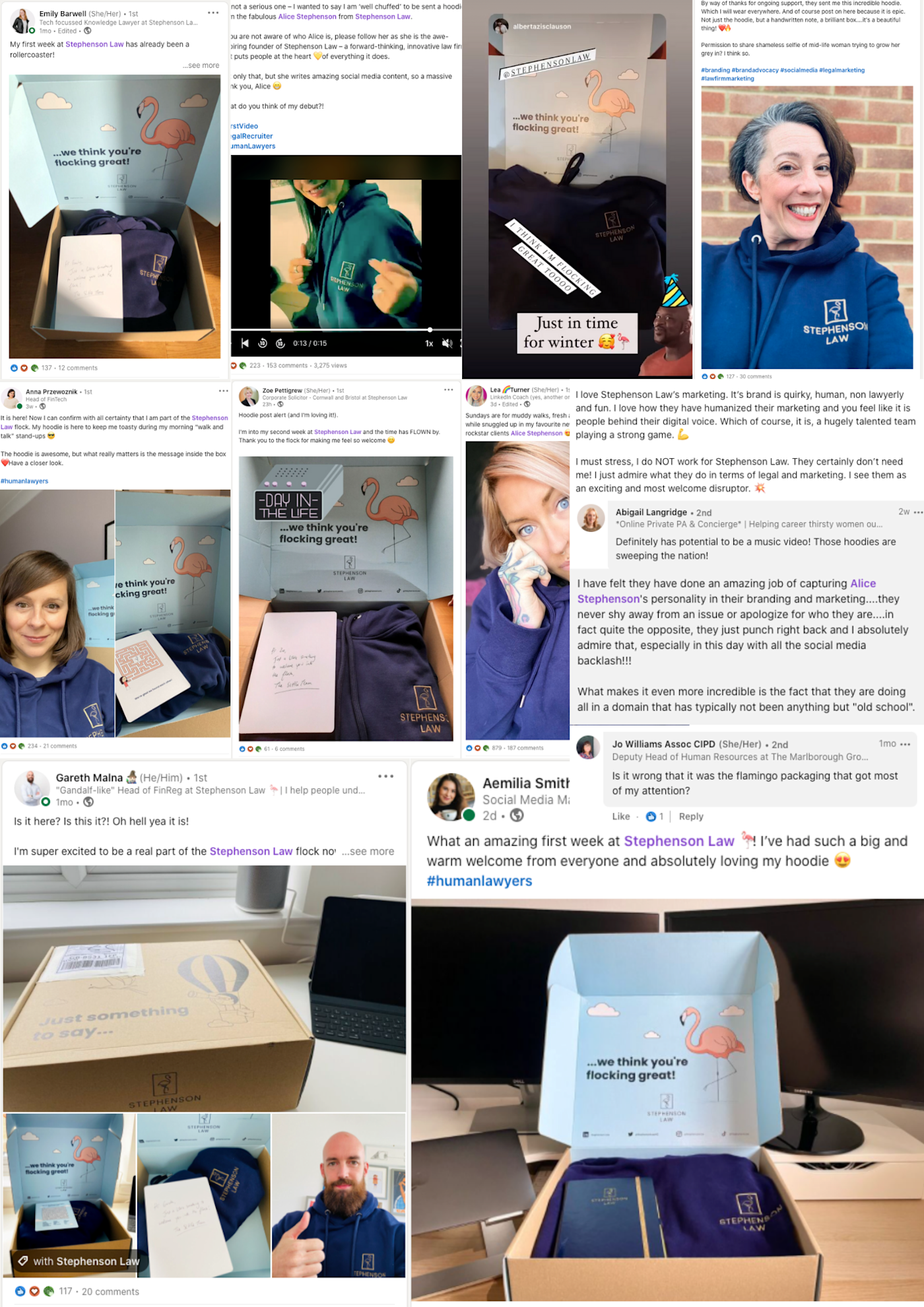
Which brings me to my next point.
4. Work with influencers (they’re closer than you think)
It’s not a surprise that decision-makers like to engage with industry-specific influencers: it’s perceived to reduce the decision-making risk and generally increases confidence in a purchase decision. Makes sense.
And while you can hire influencers, you actually already have some: your team. Any B2B marketing team should dedicate time to helping individuals within their organization become influencers in their space (if they’re comfortable doing so). Not only does it help with brand awareness, but it also helps build trust by making the brand feel more human.
Our founder, Alice Stephenson, has over 33.5K followers on LinkedIn, 25.1K on Instagram, and 10.3K on TikTok. She hasn’t done this by shouting about the packages and services we offer within her firm. Instead, she’s an advocate for diversity in the workplace and a disruptor in the legal industry. People follow her because they agree with the values she talks about, and in turn, they have a positive outlook on the values of the Stephenson Law brand.
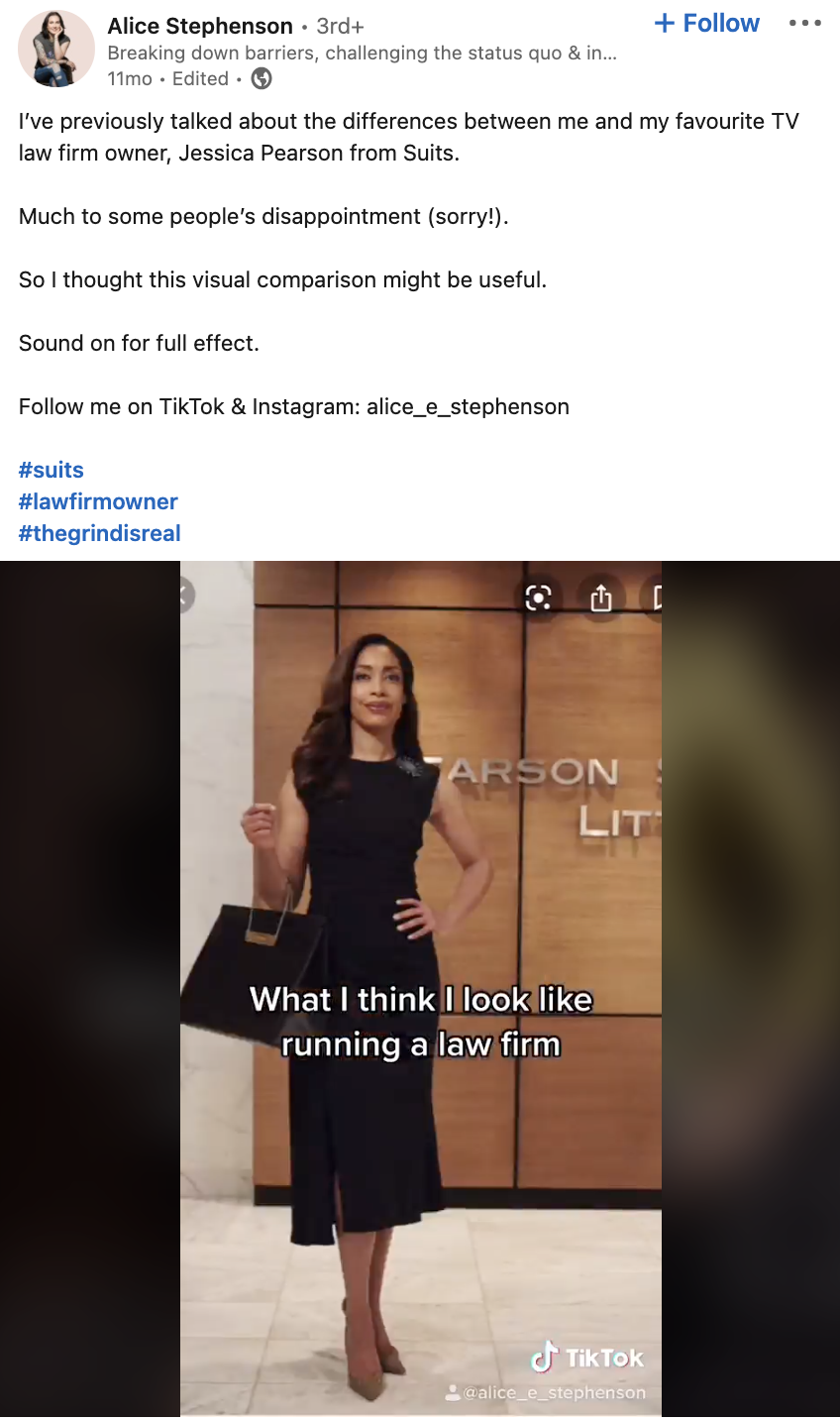
Personally, I geek out in the marketing and startup space, promoting young people in business.
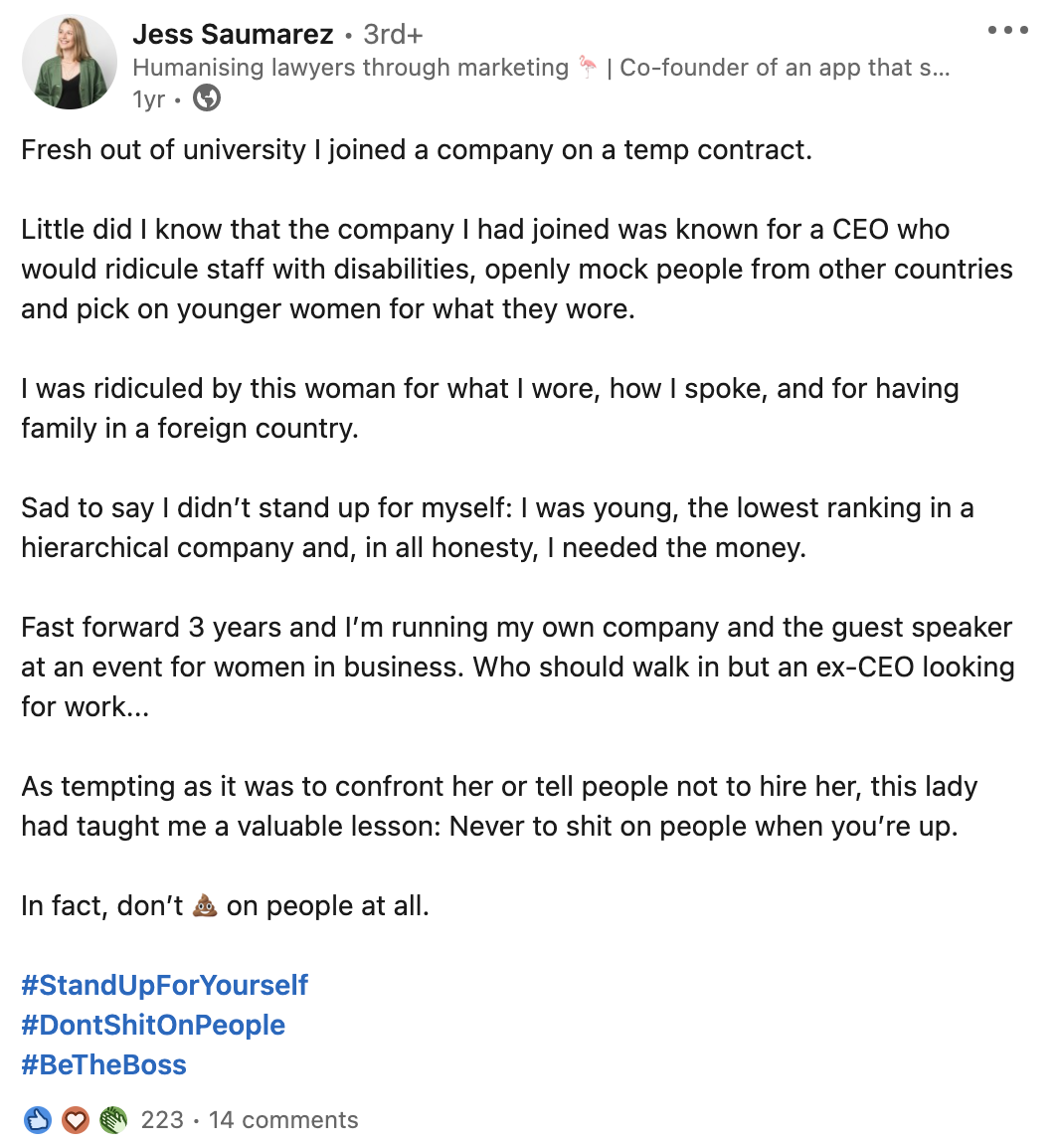
5. Transparency is key
From mixed pricing to exclusions and limitations, it can be hard for B2B companies to create a smooth buying journey. But here’s the thing: we’re pretty firmly in a click-and-buy era, decision-makers are expecting transparent and effortless purchasing experiences.
Lawyers are especially bad at this. It’s usually impossible to find how much a piece of work is going to cost and how long it will take to complete until you’ve managed to book a call (and even then, sometimes you’re hit with an unexpected bill at the end).
We knew that the tech scaleups we work with needed pricing information upfront, so we started to bundle services into packages and subscriptions. Cue our mothership legal subscription, Flamingo, which links tech businesses with lawyers-on-demand. And would you look at that: our prices are right there on the homepage.

And it’s not just about pricing. Being transparent about how your business functions, how your product or service works, and what your brand values are will build a level of trust that people are craving these days.
This was a guest post from Jess Saumarez, the Head of Marketing for Stephenson Law. Stephenson Law is an award-winning legal services provider, challenging the status quo in an industry steeped in tradition. Through subscription models, human lawyers, and emerging tech specialisms, the firm works with fast-growth, entrepreneurial tech scaleups to provide strategic advice and support on day-to-day matters. Want to see your work on the Zapier blog? Read our guidelines, and get in touch.
[adsanity_group align=’alignnone’ num_ads=1 num_columns=1 group_ids=’15192′]
Need Any Technology Assistance? Call Pursho @ 0731-6725516









